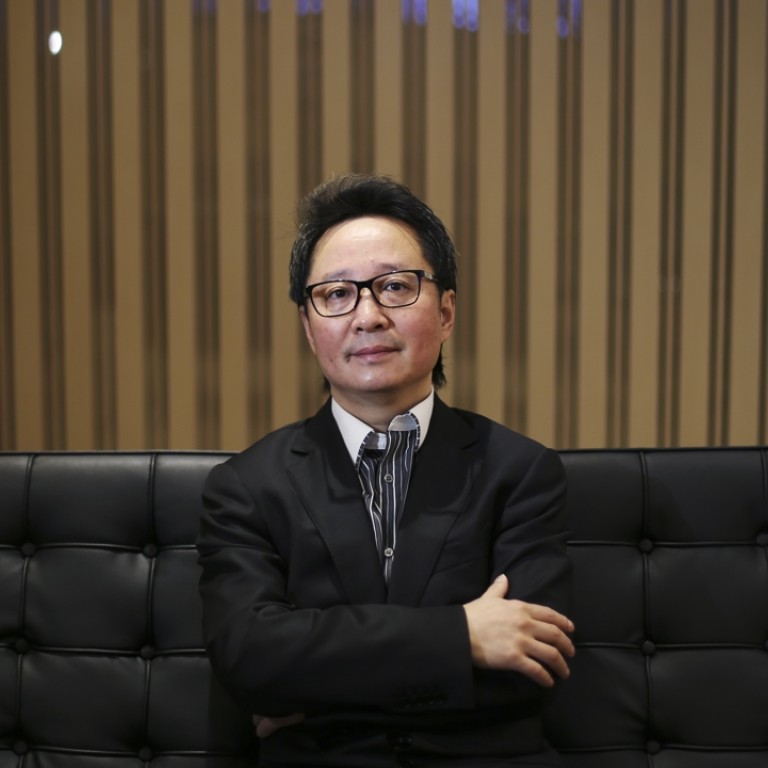
Exclusive | What do you do after spending HK$6.9 billion to pump your first drop of oil?
After spending HK$6.9 billion to pump its first drop of oil from its maiden oilsands project in Canada, Hong Kong-listed Sunshine Oilsands is now looking to the sun for brighter prospects.
The firm, backed by the asset management arms of Bank of China and China Life Insurance, sovereign fund China Investment Corp and China Petrochemical, parent of listed oil major Sinopec, plans to plough US$50 million into solar farms and facilities to extract underground heat to save natural gas costs in a region with harsh winters and relatively average sunlight.
With oil price trading at their lowest in almost seven years, the company is banking on a price recovery and cost savings from the deployment of renewable energy to put an end to its eight years of losses one day.
READ MORE: Sunshine Oilsands posts C$13m interim loss
“While we are starting production when oil price is at its lowest in a long while, it is an opportunity for us to use unconventional energy to cut production costs and carbon emissions,” Sunshine chairman Sun Kwok-ping told the South China Morning Post in an interview.
With the project having just started to produce oil, it plans to invest next year US$10 million on heat pumps with the capacity to generate 3.5 megawatt of electricity to generate steam of up to 150 degrees centigrade to liquefy oil sands and pump it from underground.
It also plans to spend US$40 million on 100 MW of solar farms – enough for around 40,000 Chinese households’ annual consumption – to complement natural gas-fired steam generation for the process.
Sun is Sunshine’s largest shareholder, having raised his stake from 5.9 per cent in April to 17.3 per cent stake at present. CIC owns 8.4 per cent, China Life Insurance (Group) has 7.8 per cent and China Petrochemical, 6.1 per cent.
Sun is the chairman of Shanghai-based heat-pump cooling and heating systems provider Nobao Renewable Energy Holding, 57 per cent owned by Cheng Kin-ming, the largest shareholder of Hong Kong-listed Shunfeng Photovoltaic International that acquired bankrupt Wuxi Suntech – the main subsidiary of Suntech Power, once the mainland’s largest solar power panel maker.
READ MORE: Sunshine Oilsands eyes HK$155 million new share placement
Oil sand is a mixture of clay, sand, water and bitumen, a sticky, energy-rich substance. Oil is produced either by environmental-degradation-prone surface mining or energy-intensive underground mining.
Since 2007, Sunshine has spent C$380.8 million on exploration and resource evaluation and C$827.2 million on property, plant and equipment to enable the production of its first drop of oil.
Along the way, major cost-blowouts on plant construction and equipment procurement due to cost inflation and poor project management saw a brief construction hiatus, before rounds of equity and bond financing kept work going.
While heat-pump technology has been commercially deployed for many years, Sun said its has not been deployed in oil production so far globally since existing technology only produces heat of up to 60 degrees centigrade, while Nobao’s “new” technology can raise it to 90 degrees.
Fort McMurray, the closest big town near Sunshine’s projects in Alberta province, has 2,100 hours of annual sunshine, less than the 2,500 to 3,000 hours in northern China where most of the nation’s solar farms are built.
Sun did not rule out Nobao selling heat pump equipment to Sunshine, but would disclose and seek shareholders’ approvals for connected transactions if required under listing rules.
An analyst who attended Sunshine’s presentation of its new technology said while management expects renewable energy could cut its oilsands project’s cash cost of US$20 by up to 40 per cent, its projected total production cost including depreciation and financing of US$45 to US$50 a barrel means it needs oil price to rebound from the current level of around US$40 to break even.
“Given that low oil prices are expected in the next year at least, the question is how scalable and bankable are its renewable energy and oilsands production capacity expansion plans,” he said.
Sun has agreed to buy HK$393.5 million worth of Sunshine shares at 75 HK cents each, raising his stake to 23.2 per cent. He has only bought HK$83.4 million of shares so far. Unfavourable market conditions saw him defer completion of the purchase from September to March next year.
Sunshine shares yesterday closed at 72 HK cents, down 85 per cent from its initial public offering price in early 2012.

